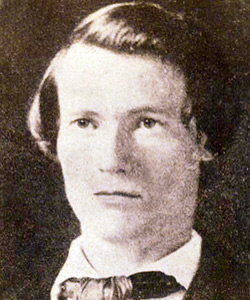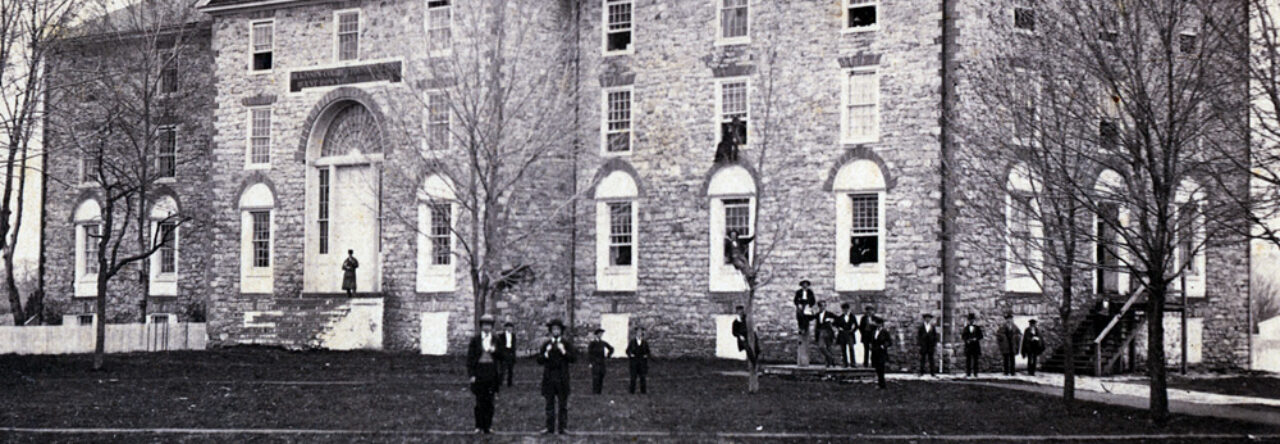 Albert Hazlett was among several of John Brown’s raiders who were not with their leader on the morning of October 18, 1859 when US Marines attacked the engine house at Harpers Ferry, Virginia. Instead, Hazlett and Osborne Anderson watched the short battle from afar. The two men had left Harpers Ferry undetected late on October 17. After they could not find the five raiders who also escaped, they decided to head north – which eventually brought them into southern Pennsylvania. While Anderson lived to publish a book in 1861 about his experience, Hazlett was arrested in Cumberland County, Pennsylvania on October 22, 1859. Local authorities, however, at first thought that they had in custody “a man supposed to be Capt. Cook.” (John E. Cook was arrested three days later outside of Chambersburg, Pennsylvania). The initial confusion offered an opportunity for Hazlett, who claimed that he was actually William Harrison and had nothing to do with Brown’s raid. On October 29 Hazlett appeared before a judge in Carlisle on a writ of habeas corpus, but Hazlett’s claim that he was the wrong person failed to convince the judge. While “there is no evidence that we have any man in our custody named Albert Hazlett,” the court ruled that “we are satisfied that a monstrous crime has been committed [and] that the prisoner…participated in it.” Hazlett was sent back to Charlestown, Virginia on November 5 for a trial and was executed on March 16, 1860. Historian David Reynolds, who wrote John Brown, Abolitionist: The Man Who Killed Slavery, Sparked the Civil War, and Seeded Civil Rights, notes that the judge sent Hazlett back to Virginia “even though the evidence linking him to Harpers Ferry was circumstantial.”
Albert Hazlett was among several of John Brown’s raiders who were not with their leader on the morning of October 18, 1859 when US Marines attacked the engine house at Harpers Ferry, Virginia. Instead, Hazlett and Osborne Anderson watched the short battle from afar. The two men had left Harpers Ferry undetected late on October 17. After they could not find the five raiders who also escaped, they decided to head north – which eventually brought them into southern Pennsylvania. While Anderson lived to publish a book in 1861 about his experience, Hazlett was arrested in Cumberland County, Pennsylvania on October 22, 1859. Local authorities, however, at first thought that they had in custody “a man supposed to be Capt. Cook.” (John E. Cook was arrested three days later outside of Chambersburg, Pennsylvania). The initial confusion offered an opportunity for Hazlett, who claimed that he was actually William Harrison and had nothing to do with Brown’s raid. On October 29 Hazlett appeared before a judge in Carlisle on a writ of habeas corpus, but Hazlett’s claim that he was the wrong person failed to convince the judge. While “there is no evidence that we have any man in our custody named Albert Hazlett,” the court ruled that “we are satisfied that a monstrous crime has been committed [and] that the prisoner…participated in it.” Hazlett was sent back to Charlestown, Virginia on November 5 for a trial and was executed on March 16, 1860. Historian David Reynolds, who wrote John Brown, Abolitionist: The Man Who Killed Slavery, Sparked the Civil War, and Seeded Civil Rights, notes that the judge sent Hazlett back to Virginia “even though the evidence linking him to Harpers Ferry was circumstantial.”

Leave a Reply